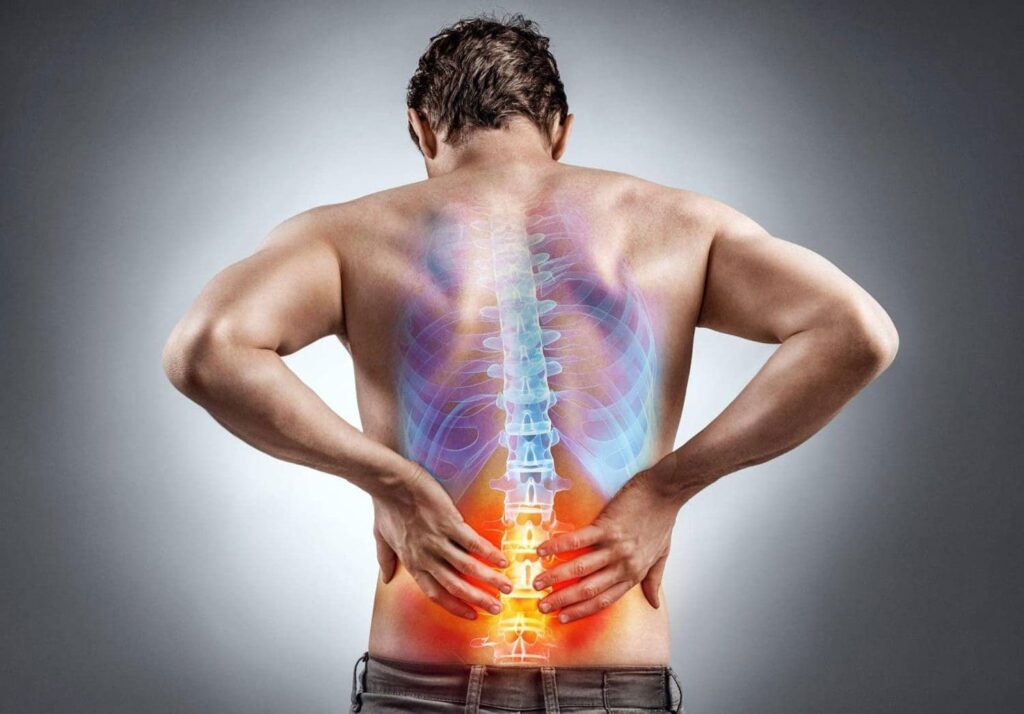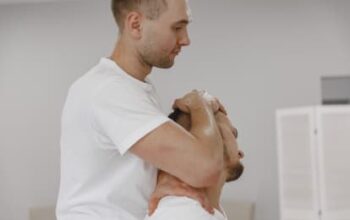Lower back pain, a universal affliction touching the lives of millions, drives many seekers of solace into the realm of diverse treatments, including the realm of chiropractic adjustments. Amidst the sea of hopeful souls, where some find the shores of relief, others encounter the tempestuous waves of worsened discomfort post-treatment. This enigma, shrouded in mystery, leaves individuals adrift in contemplation, yearning for answers on why the tides of pain surge after the gentle touch of adjustment.
Understanding Chiropractic Adjustments

Understanding chiropractic adjustments is essential for individuals seeking relief from lower back pain and other musculoskeletal issues. Here’s an overview of what chiropractic adjustments entail:
- Purpose: Chiropractic adjustments, also known as spinal manipulation or chiropractic manipulative therapy, aim to correct misalignments in the spine, known as subluxations. These misalignments can occur due to various factors such as poor posture, injuries, repetitive movements, or degenerative conditions. By restoring proper alignment, chiropractors seek to improve spinal function, alleviate pain, and promote overall health and well-being;
- Techniques: Chiropractic adjustments involve manual manipulation of the spine and other joints to apply controlled force to specific areas. Chiropractors may use their hands or specialized instruments to perform adjustments, depending on the individual’s condition and treatment preferences. Common techniques include diversified technique, activator method, Gonstead technique, and flexion-distraction technique, among others;
- Assessment: Before performing an adjustment, chiropractors conduct a thorough evaluation of the patient’s spinal health, medical history, and presenting symptoms. This assessment may include physical examinations, orthopedic tests, neurological evaluations, and imaging studies such as X-rays or MRI scans to identify areas of misalignment and assess overall spinal health;
- Treatment Plan: Based on the assessment findings, chiropractors develop personalized treatment plans tailored to the individual’s needs and goals. Treatment plans may include a series of chiropractic adjustments, along with complementary therapies such as soft tissue therapy, therapeutic exercises, nutritional counseling, and lifestyle modifications to address underlying factors contributing to the patient’s condition;
- Adjustment Process: During a chiropractic adjustment, the chiropractor applies precise pressure or thrust to the affected joint or spinal segment to restore proper alignment and mobility. This manipulation may produce an audible cracking or popping sound, known as cavitation, as gases are released from the joint capsule. While this sound may seem alarming, it is typically painless and indicates the release of pressure within the joint;
- Immediate Effects: Many individuals experience immediate relief or improved range of motion following a chiropractic adjustment. The adjustment can help reduce pain, muscle tension, and nerve irritation, leading to improved function and mobility in the treated area. Some individuals may also experience mild soreness or discomfort following an adjustment, which usually resolves within a day or two as the body adjusts to the changes;
- Long-Term Benefits: Consistent chiropractic care can provide lasting benefits for individuals with lower back pain and other musculoskeletal issues. By addressing underlying spinal misalignments and promoting proper spinal alignment and function, chiropractic adjustments can help prevent future injuries, reduce the risk of chronic pain conditions, and improve overall quality of life.
- Safety Considerations: Chiropractic adjustments are generally safe when performed by qualified and experienced practitioners. However, certain individuals may not be suitable candidates for chiropractic care, such as those with severe osteoporosis, spinal fractures, or certain medical conditions affecting the spine or nervous system. It’s essential for individuals considering chiropractic treatment to undergo a comprehensive evaluation and discuss any concerns with their healthcare provider.
By understanding the purpose, techniques, assessment process, and potential benefits of chiropractic adjustments, individuals can make informed decisions about incorporating chiropractic care into their treatment plan for lower back pain and other musculoskeletal issues. Collaborating with a qualified chiropractor can help individuals achieve optimal spinal health, alleviate pain, and improve overall well-being.
Reasons for Worsening Lower Back Pain
Let’s delve deeper into the reasons why lower back pain might worsen after a chiropractic adjustment:
- Initial Adjustment Reaction: It’s not uncommon for some individuals to experience a temporary exacerbation of pain immediately following a chiropractic adjustment. This initial reaction could be attributed to the body’s response to sudden manipulation of the spine and surrounding tissues. The adjustment may trigger an inflammatory response, leading to heightened pain perception in the affected area. This reaction typically subsides within a few days as the body adjusts to the treatment;
- Muscular Tension Release: Chiropractic adjustments often target tight or restricted muscles in the lower back. As these muscles undergo manipulation and release tension, individuals may experience temporary soreness or discomfort. This discomfort is often part of the healing process and should diminish as the muscles adapt to the new alignment and increased flexibility;
- Adjustment Misalignment: In some cases, the chiropractic adjustment may not achieve the desired alignment or may inadvertently exacerbate existing misalignments. This can result in increased pressure on surrounding nerves, muscles, and joints, leading to heightened pain and discomfort. It’s essential for chiropractors to carefully assess the individual’s condition and tailor the adjustment technique to address specific concerns to minimize the risk of misalignment;
- Underlying Structural Issues: Individuals with underlying structural abnormalities or degenerative conditions in the spine, such as herniated discs or spinal stenosis, may find that chiropractic adjustments exacerbate their symptoms initially. While chiropractic care can provide relief for many spinal conditions, it’s crucial to address these underlying issues carefully. Chiropractors may need to modify their approach or incorporate additional therapies to accommodate these conditions and minimize discomfort;
- Individual Response to Treatment: Each person’s response to chiropractic care can vary based on factors such as their overall health, pain tolerance, and previous experiences with chiropractic adjustments. While some individuals may experience immediate relief, others may experience temporary exacerbation of symptoms before experiencing lasting improvement. It’s essential for chiropractors to closely monitor the individual’s response to treatment and adjust their approach accordingly to ensure optimal outcomes.
By considering these factors, chiropractors can better understand why some individuals may experience worsened lower back pain after a chiropractic adjustment and take proactive measures to address their concerns effectively. Open communication between the chiropractor and patient is key to ensuring a positive treatment experience and achieving long-term relief from lower back pain.
Managing Exacerbated Lower Back Pain
Managing exacerbated lower back pain following a chiropractic adjustment requires a multifaceted approach aimed at relieving discomfort and promoting healing. Here are some effective strategies to help individuals cope with heightened pain post-treatment:
- Apply Ice or Heat: Alternating between ice packs and heating pads can help reduce inflammation and soothe sore muscles in the lower back. Apply ice for 15-20 minutes followed by heat for the same duration several times a day. This combination therapy can provide relief and promote faster recovery;
- Gentle Stretching: Engage in gentle stretching exercises to alleviate tension and improve flexibility in the lower back. Focus on stretches that target the affected area while avoiding movements that exacerbate pain. Slow, controlled stretching can help relax tight muscles and promote circulation, facilitating the healing process;
- Over-the-Counter Pain Relief: Over-the-counter pain medications, such as ibuprofen or acetaminophen, can help alleviate discomfort and reduce inflammation. Follow the recommended dosage instructions and consult with a healthcare professional if you have any underlying medical conditions or concerns about medication interactions;
- Rest and Relaxation: Allow your body time to rest and recover following a chiropractic adjustment. Avoid strenuous activities or movements that may aggravate your symptoms. Incorporate relaxation techniques such as deep breathing, meditation, or gentle yoga to promote stress relief and enhance overall well-bein;
- Massage Therapy: Consider incorporating massage therapy into your treatment plan to relieve muscle tension and promote circulation in the lower back. A skilled massage therapist can target specific areas of discomfort and provide targeted relief, complementing the effects of chiropractic adjustments;
- Hydration and Nutrition: Stay hydrated and maintain a balanced diet rich in anti-inflammatory foods such as fruits, vegetables, lean proteins, and healthy fats. Proper hydration and nutrition can support the body’s healing process and reduce inflammation, helping to alleviate lower back pain;
- Physical Therapy: If the exacerbated pain persists, consider seeking guidance from a physical therapist specializing in back pain management. Physical therapy can help address underlying muscular imbalances, improve posture, and enhance core strength, reducing the risk of future flare-ups;
- Follow-Up with Chiropractor: Communicate openly with your chiropractor about your experience and any lingering discomfort following the adjustment. Your chiropractor may recommend additional treatments, adjustments, or modifications to your care plan to address your specific needs and promote healing;
- Stay Active: While rest is important for recovery, maintaining gentle movement and low-impact activities can help prevent stiffness and promote circulation in the affected area. Engage in activities such as walking, swimming, or cycling that are gentle on the lower back and promote overall spinal health;
- Mind-Body Techniques: Explore mind-body techniques such as guided imagery, progressive muscle relaxation, or cognitive-behavioral therapy to manage pain perception and promote relaxation. These techniques can help shift focus away from discomfort and foster a sense of control over your healing process.
Behold the magic woven into these strategies, dear patient! As you intertwine them into your daily rhythm, you embark on a wondrous journey of soothing the fiery whispers of exacerbated lower back pain post-chiropractic adjustment. Tune into the symphony of sensations playing within your being, converse with the guardians of your well-being, and embark on a quest of proactive healing to nurture the garden of recovery and safeguard against the whispers of discomfort that may stir in the winds of tomorrow. Let the melody of your body’s wisdom guide you, as you dance in harmony with the rhythm of your healing journey.
Preventing Exacerbated Lower Back Pain in the Future:
Managing exacerbated lower back pain following a chiropractic adjustment requires a multifaceted approach aimed at relieving discomfort and promoting healing. Here are some effective strategies to help individuals cope with heightened pain post-treatment:
- Apply Ice or Heat: Alternating between ice packs and heating pads can help reduce inflammation and soothe sore muscles in the lower back. Apply ice for 15-20 minutes followed by heat for the same duration several times a day. This combination therapy can provide relief and promote faster recovery;
- Gentle Stretching: Engage in gentle stretching exercises to alleviate tension and improve flexibility in the lower back. Focus on stretches that target the affected area while avoiding movements that exacerbate pain. Slow, controlled stretching can help relax tight muscles and promote circulation, facilitating the healing process;
- Over-the-Counter Pain Relief: Over-the-counter pain medications, such as ibuprofen or acetaminophen, can help alleviate discomfort and reduce inflammation. Follow the recommended dosage instructions and consult with a healthcare professional if you have any underlying medical conditions or concerns about medication interactions;
- Rest and Relaxation: Allow your body time to rest and recover following a chiropractic adjustment. Avoid strenuous activities or movements that may aggravate your symptoms. Incorporate relaxation techniques such as deep breathing, meditation, or gentle yoga to promote stress relief and enhance overall well-being;
- Massage Therapy: Consider incorporating massage therapy into your treatment plan to relieve muscle tension and promote circulation in the lower back. A skilled massage therapist can target specific areas of discomfort and provide targeted relief, complementing the effects of chiropractic adjustments;
- Hydration and Nutrition: Stay hydrated and maintain a balanced diet rich in anti-inflammatory foods such as fruits, vegetables, lean proteins, and healthy fats. Proper hydration and nutrition can support the body’s healing process and reduce inflammation, helping to alleviate lower back pain;
- Physical Therapy: If the exacerbated pain persists, consider seeking guidance from a physical therapist specializing in back pain management. Physical therapy can help address underlying muscular imbalances, improve posture, and enhance core strength, reducing the risk of future flare-ups;
- Follow-Up with Chiropractor: Communicate openly with your chiropractor about your experience and any lingering discomfort following the adjustment. Your chiropractor may recommend additional treatments, adjustments, or modifications to your care plan to address your specific needs and promote healing;
- Stay Active: While rest is important for recovery, maintaining gentle movement and low-impact activities can help prevent stiffness and promote circulation in the affected area. Engage in activities such as walking, swimming, or cycling that are gentle on the lower back and promote overall spinal health;%
- Mind-Body Techniques: Explore mind-body techniques such as guided imagery, progressive muscle relaxation, or cognitive-behavioral therapy to manage pain perception and promote relaxation. These techniques can help shift focus away from discomfort and foster a sense of control over your healing process.
Ah, dear patient, behold the canvas of your healing journey, where each stroke of strategy colors the tapestry of relief! By weaving these artful strategies into your daily rhythm, you craft a symphony of harmony amidst the echoes of lower back pain post-chiropractic adjustment. Tune into the whispers of your body’s wisdom, converse with the guardians of your health, and dance with delight as you orchestrate the melody of recovery, preventing future echoes of discomfort. Embrace the palette of possibilities and paint your path to wellness with bold strokes of proactive care and vibrant hues of healing!
Conclusion
For those seeking relief from back pain, experiencing a worsening of back pain after a chiropractic adjustment can be a discouraging setback. However, by understanding the potential causes of this phenomenon and implementing proactive management strategies, you can overcome this challenge more effectively. Keep in mind to have open communication with your chiropractor, make self-care a priority, and take steps to prevent future back pain episodes. With patience, persistence and the right approach, you can work towards lasting relief and improved spinal health.



